“My work is influenced by tribal art with a touch of my experience. And I believe it is contemporary.”- Anuradha Thakur
I began life as an artist almost 22 years after my art education from Pune. I began as an art teacher for under-privileged children near Ahmednagar. The rough life of those innocent children was naked in front of me. I accepted that challenge with patience. From ‘no’ interest in art to ‘passionately living art’, was followed by children. I taught them to make murals and collage with natural objects like clay, vegetables, plants, etc. Minimum accessories-maximum art became motivational for them. They enjoyed it. This was then extended to the women of the village. My life became a mission, and I started visiting tribal areas. Women and children in those remote areas were very creative and skilful. They got their potential source of income through arts and crafts. Their own art and craft was incredible, but sans any knowledge of techniques and modernity. Unfortunately, these arts are not part of any teaching in formal education.
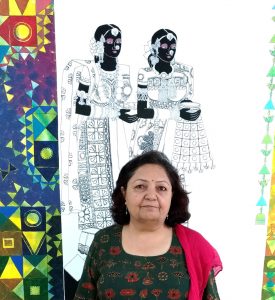

I feel, in India we should seriously undertake the revival of tribal art. Why can’t technology be incorporated for these small scale artisans? My style is tribal, but my subjects are not. My works talk about ‘women in the world today’ or about issues – social, customs and rituals, all of which I feel need to be highlighted. And I do it by using the colour black. Using black in painting is like showing confidence and completeness for me. My works are influenced by tribal art, with a touch of my experience. And I believe it is contemporary.
“Contemporary scene today is quite open with no boundaries. It`s an interesting time to be in.” – Prajakta Potnis
I wanted to create art through my own experience and not from nostalgia. My art came from my middle class background, my surroundings, my perceptions, and my wanting to break free of boundaries. So the choice of objects or media came from my surroundings.
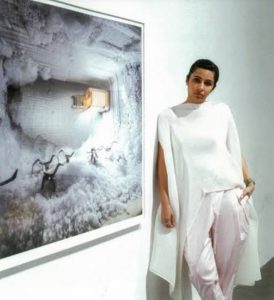
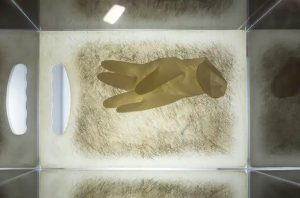
The contemporary art scene today is quite open with no boundaries. It is an interesting time to be in. It is open in the sense where a scientist can be an artist, a filmmaker can be an artist, or a writer can be an artist. It is not necessary for an artist to learn in an art college. In contemporary art, materiality and possibility of using things comes naturally to you. I am not from a generation which follows rules like oil painting has to be done on canvas. I like to experiment with material.
I can use oil paint on manjarpat (a type of white fabric) and see its result. I do not want to make art thinking how long it will last, or how valuable it will be in the future. I want to think whether I can work in the immediacy. So the life of the material I am using is not important to me. I do not want any boundaries or restrictions for my work. One should be able to make art easily, anywhere. I want to make art which any lay person can experience. I was fascinated by site specific installations. I like Land Art where you don’t need anybody’s help to display your art, or you don’t need a gallery. You can create art anywhere, with any material. It is empowering! You also want people to ask questions and talk about art. Your art should emerge from the space and time you occupy, and everyday material that is available in your surroundings, and not from history. My art came from the response to my surroundings, and not from history.
Camps and residencies have become an integral part of contemporary art practitioners. For funding, sale, pop up exhibitions, individual efforts are too tiring. Therefore it is important for all the stakeholders of art to come together and build a community of like-minded people.
“The efforts and role of an art teacher matters a lot in grooming talent.”- Douglas John
During our time, we often assisted senior artists without thinking of remuneration, and that helped us a lot later. We got to closely observe their work. No institute can give lessons in becoming a successful artist. It is learnt by observing. The efforts and role of an art teacher matters a lot in grooming talent. I always thrive to update myself. The teacher should be aware of new technology and the constantly changing trends in the world of art. When you keep experimenting, you evolve as an artist. I have noticed that many states take initiative for organising art camps where all the expenses are taken care of by the organisers. Organisers then take one work of each participating artist. Documentation is done. It encourages the practice of collecting art, hence these camps are significant. Unfortunately, in Maharashtra, we don’t see this happening. Mumbai being a commercial hub, artists keep getting work, but that isn’t enough. The state government must take more initiatives to promote art. Some years ago ‘Artist Center’ initiated many camps which gave opportunity to artists. ‘Dot-Line-Space’ was one such initiative in 2014, but such camps should be an ongoing process. Institutes like the Bombay Art Society can initiate such camps. Even private sectors and commercial groups need to support such activities. The Piramal group is doing its bit to promote art and artists.
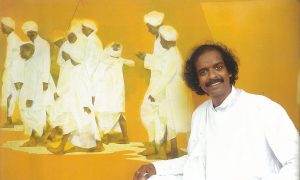

For an artist, establishing his/her identity is extremely challenging. It does not happen as soon as you graduate from an art institute. It takes years of struggle to get noticed.
(Douglas John’s work can be seen at : www.douglasjohnindia.com)
“Experimental art is accepted, but has not reached the masses yet” – Yashwant Deshmukh
I used to have long conversations with the Late veteran artist Prabhakar Barwe, and always admired his style. I used to observe him closely. The simplicity of form in his works, the process, and his philosophy, greatly influenced me, and it reflected in my work. He was much ahead of his time. My journey from academic practice to an artist was very profound and silent. My work evolved from observing objects and chores of everyday life, to looking at the complexity of your surroundings and simplifying it in your work, and this wonderful process I picked up spontaneously.
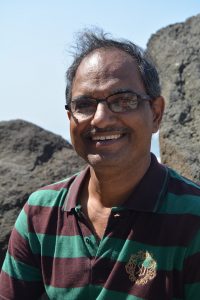
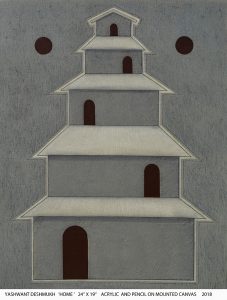
While there are many artists who follow the traditional art practice, there are several others experimenting with new genres. Artists these days are well versed with various challenges and issues. The art scene today is not pessimistic. Experimental art is accepted, but it has yet to reach the masses. Art galleries and artists of the last generation mutually worked with each other. Unfortunately, that is lacking now.
Artists on international platform are working in various mediums. They are widely using the Internet and the social media to keep ahead of trends. Video art, graphics, films and technological works are included in art practices almost the way the canvas was, a few years ago. There is lot of pressure to produce new work. It is a competitive scenario, and funds are a major challenge for artists. Government initiatives are few and far. Most artists generate their own funds, which in a way allows them to make art more liberally. Young artists today are smart, but they should learn to believe in themselves and their roots. Many foreign artists come to India to experiment new genre of art in traditional style. American artist Waswo based in Udaipur, is one such example. It is interesting to see how he uses miniatures in contemporary context. Now that is experimental!
“Fundraising is always difficult. Art production and labour costs are paid for, but the artist is for free!” – Mansi Bhatt
I see myself as a professional minority! I am an artist, and I like to imagine impossible ideas and shape them into reality. That space is art and it is extraordinary, full of voice and sharply made.
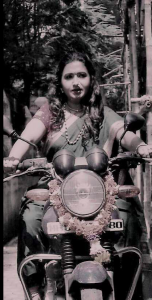
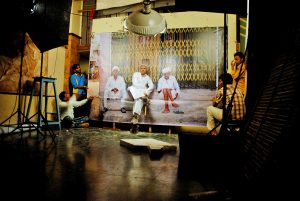
The process of ‘making’ is an art space. The readability of your thought process is art. The reason for thinking of ‘making art’ itself is ‘art’. But such art comes with many questions. To this, my answer came from “my body” as “my work.” I make my questions readable to viewers through my performance using my own body. Well, this needs vision for an artist, and also the viewer. That process is challenging. As Mansi Bhatt, I have my identity, but when that becomes ‘a question’ for audience (viewers), I need to undergo a long process. Only then people can authentically reach to the meaning of that question.
Here, art production and labour costs are paid for, but the artist is for free! Galleries learn to look at art through a commercial angle, and work a lot on building an image. Very few galleries are sensitive to the need of an artist to explore unchartered territories crucial to one’s practice. It`s all about art, except the art.
Does the government even recognise art as a part of our ecosystem? It understands only folk and traditions as art to support, and that space is fixed. NGMAs (National Gallery for Modern Art) are few, but can have a wider approach to contemporary art. I have been working independently with curators/galleries towards selective projects/shows and so far they have been supportive. Fund raising is always difficult. We are a market obsessed country, and people invest in the market of art, not for value of art! In such a scenario, believing in your ideas and realising them, becomes even more important.
(You can follow Mansi on Instagram @Mansi9710)
– Inputs by Sharmila Phadke

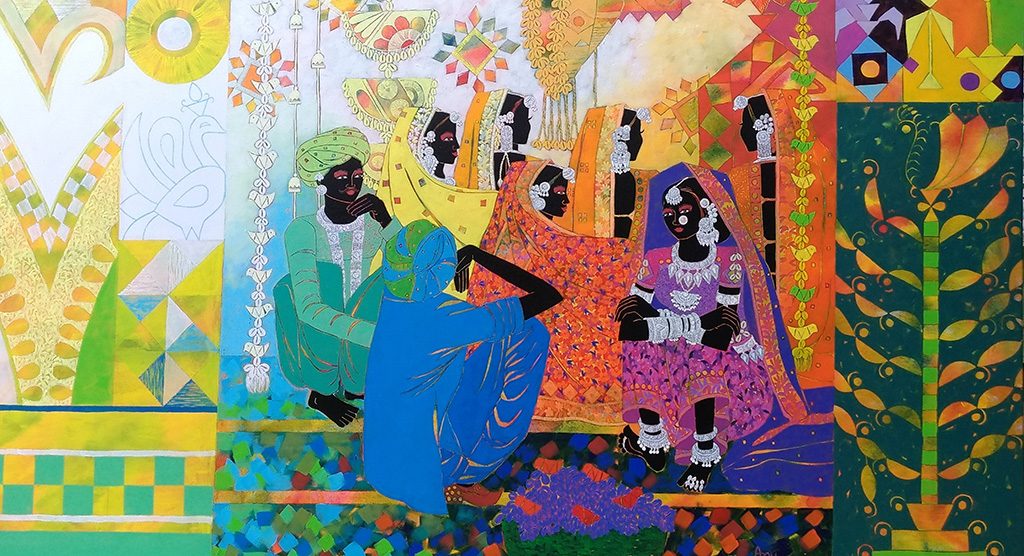
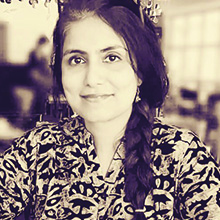 [/column]
[/column]